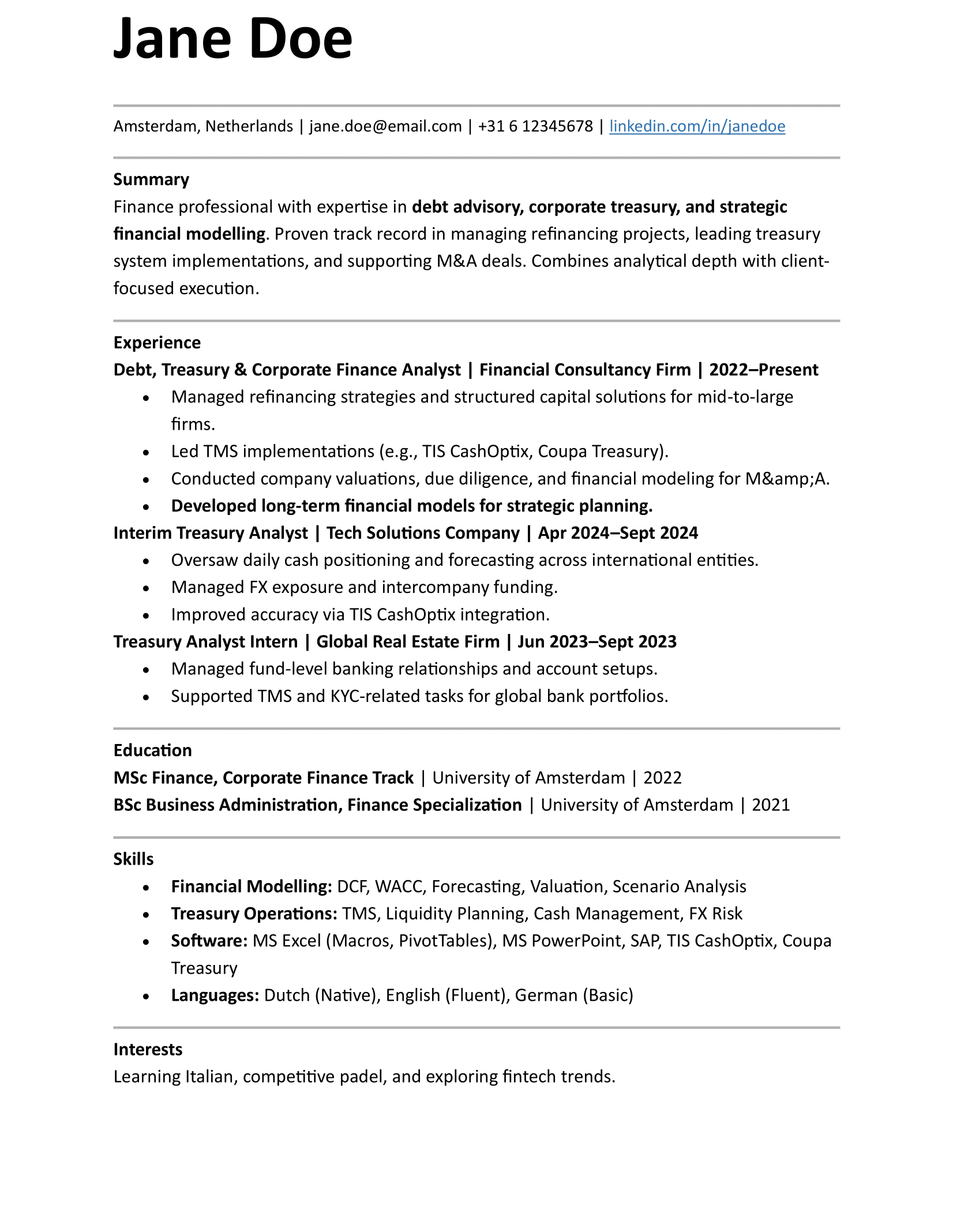
Your CV is more than a document. It’s your personal marketing pitch. It tells your professional story, outlines your experience, and highlights the skills, qualities and achievements that make you a great fit. That’s why we recommend creating a strong base CV that you can tailor for each job application. While there’s some flexibility in how a CV is structured, there are key sections that most employers expect to see.
Name and contact details
At the top of your CV, include your name and contact details. This usually means your email address, phone number, and general location (city and country). You can also add your LinkedIn profile if it’s up to date. Some people include a headshot, but this isn’t required. If you choose to use one, make sure it’s professional.
Personal profile
This is a short introduction placed just beneath your name and contact details. It tells hiring managers a little bit about you and what you’re looking for. Keep it to a few short sentences. Are you living outside the country you are applying in? Then make sure you mention the reason for looking for a job abroad. If you live outside the EU it’s best to also mention if you have a work permit or if you are in need of a work permit sponsor.
Employment history
List your work experience starting with the most recent job. For each position state your job title (this doesn’t have to be the official one, it can be helpful to use a different title when the official title is not clear enough), the employer and the period of employment. Then describe your main responsibilities and achievements in short bullet points. Use facts or figures when you can, and focus on tasks that are relevant for the job you’re applying to.
If you have many years’ worth of experience, you can reduce the detail of old or irrelevant roles (or even leave out the summary of the responsibilities and just mention the title, employer and period of employment).
Education and qualifications
Like your employment history, your education should be listed in reverse chronological order. Include the name of the institutions, name of the education program and the period you were there. You can also add a few of the most relevant modules, assignments or projects and the grades you achieved. This is especially important when you recently graduated and do not yet have a lot of experience to put on your CV. In this case it’s also worth putting your education section above your employment history section.
Skills
Use this part of your CV to highlight key strengths. This could include anything from leadership and communication skills to experience with tools like Excel or financial software.
Hobbies and interests (optional)
You can include this section if you have relevant hobbies and interests for the job or just want to make your CV a little bit more personal.
Once you have written your CV, take time to make sure it looks clear and easy to read. The content matters, but presentation plays a big role in how it’s received. Tools like Canva offer free templates that are both modern and professional looking.
If you’d like a second opinion on your CV, you’re welcome to contact me or one of my colleagues. We’re also happy to have a short, complementary call to help you talk through your options in the treasury field.
Good luck with updating your CV! And hopefully we will be in touch.




